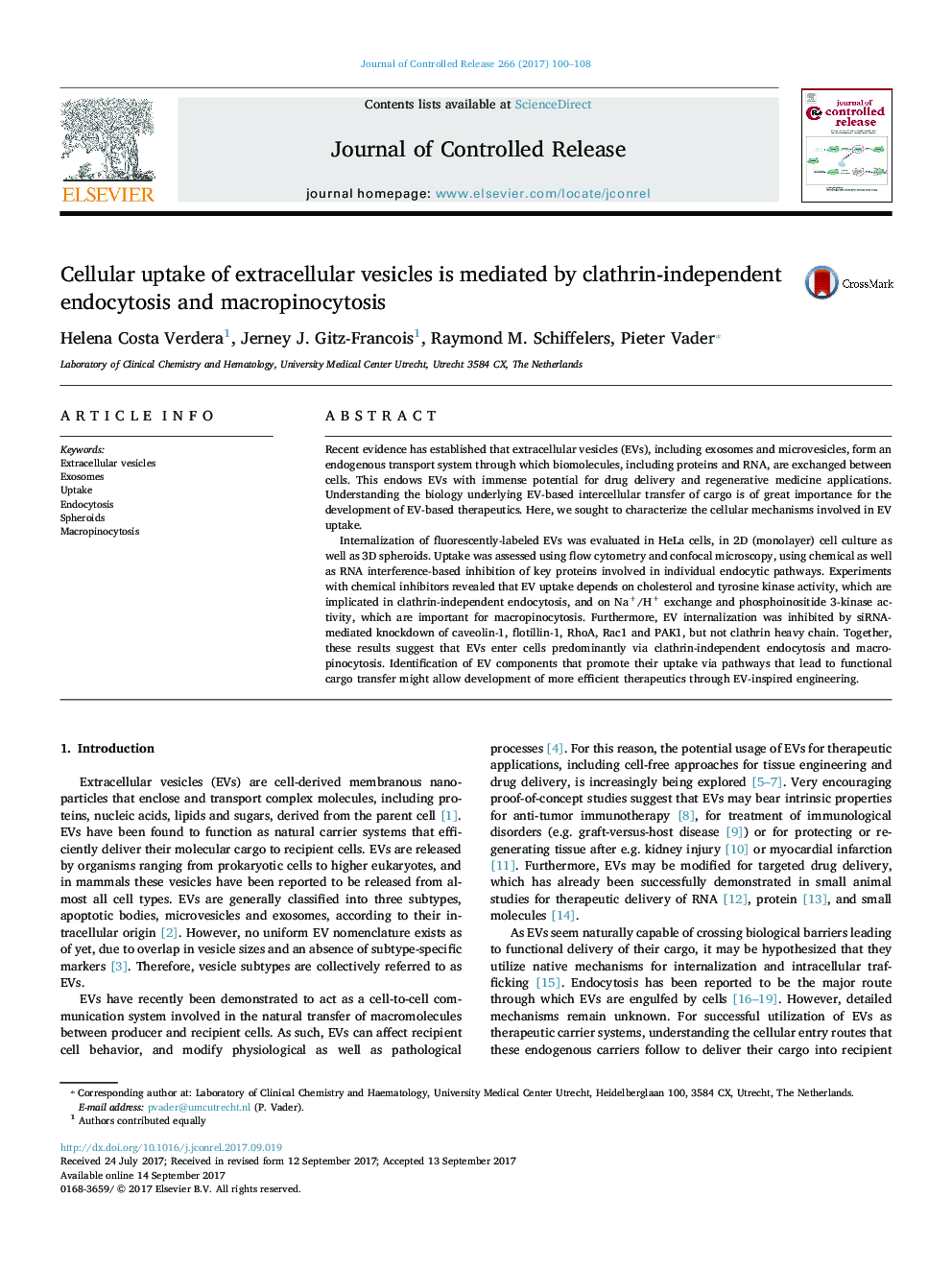| کد مقاله | کد نشریه | سال انتشار | مقاله انگلیسی | نسخه تمام متن |
|---|---|---|---|---|
| 5433333 | 1508984 | 2017 | 9 صفحه PDF | دانلود رایگان |
Recent evidence has established that extracellular vesicles (EVs), including exosomes and microvesicles, form an endogenous transport system through which biomolecules, including proteins and RNA, are exchanged between cells. This endows EVs with immense potential for drug delivery and regenerative medicine applications. Understanding the biology underlying EV-based intercellular transfer of cargo is of great importance for the development of EV-based therapeutics. Here, we sought to characterize the cellular mechanisms involved in EV uptake.Internalization of fluorescently-labeled EVs was evaluated in HeLa cells, in 2D (monolayer) cell culture as well as 3D spheroids. Uptake was assessed using flow cytometry and confocal microscopy, using chemical as well as RNA interference-based inhibition of key proteins involved in individual endocytic pathways. Experiments with chemical inhibitors revealed that EV uptake depends on cholesterol and tyrosine kinase activity, which are implicated in clathrin-independent endocytosis, and on Na+/H+ exchange and phosphoinositide 3-kinase activity, which are important for macropinocytosis. Furthermore, EV internalization was inhibited by siRNA-mediated knockdown of caveolin-1, flotillin-1, RhoA, Rac1 and PAK1, but not clathrin heavy chain. Together, these results suggest that EVs enter cells predominantly via clathrin-independent endocytosis and macropinocytosis. Identification of EV components that promote their uptake via pathways that lead to functional cargo transfer might allow development of more efficient therapeutics through EV-inspired engineering.
225
Journal: Journal of Controlled Release - Volume 266, 28 November 2017, Pages 100-108
